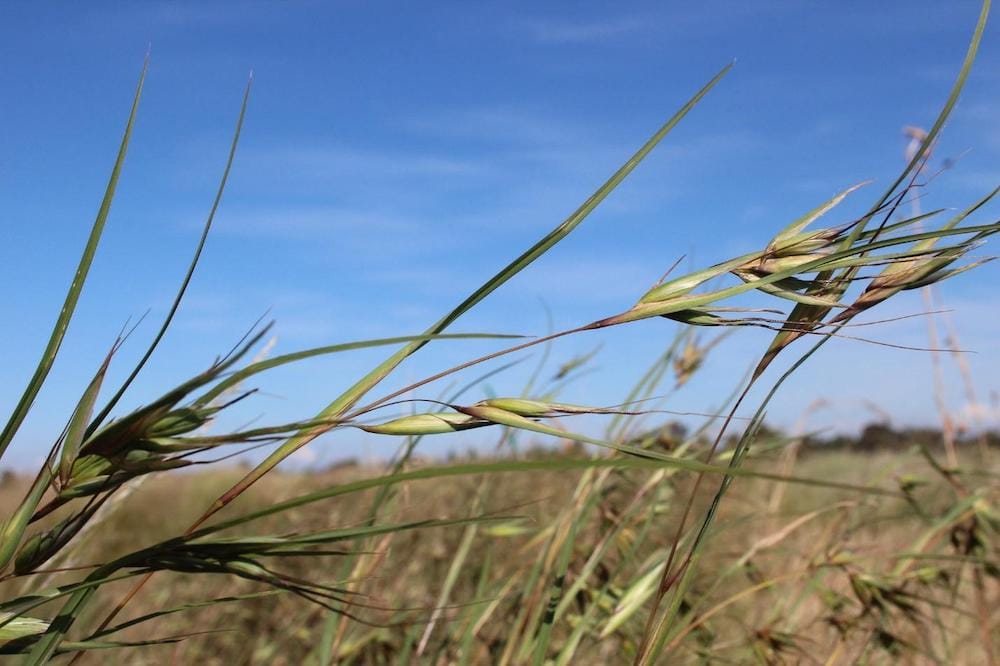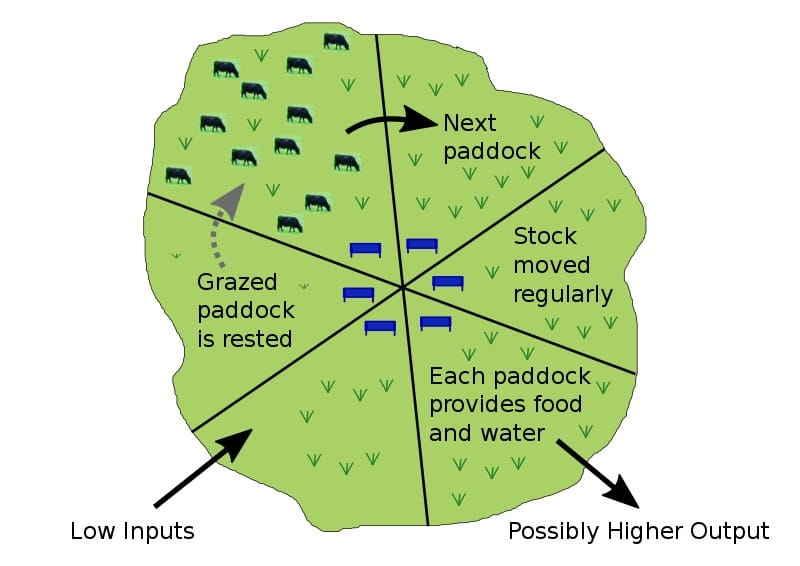Native pastures are those that are usually filled with native grasses, native herbs and native shrubs.
A healthy native pasture will have up to hundreds of species, out of which 25% - 30% are grasses. The rest 70% usually comprise lilies, daisies, sedges, rushes and herbs from other families. And though perennial grasses do not take up the majority of species present, they dominate most of the pasture in terms of the area taken up.
There are regions that have a patchwork of different types of species. The framework of the land like soil composition, the density of trees, slopes and landscapes will determine which of the species will rule the native grassland.
Native pastures
- Serve as a wonderful natural habitat for surrounding flora and fauna
- Serve as a nurturing habitat for endangered species of flora and fauna
- They adapt easily to climates in the region
- Are very low-maintenance compared to exotic grasses
- Have lower yields but also need fewer resources
- Provides good feed in areas of drought
Original pastures from our great-great-grandfathers and grandmothers times were usually a mix of warm-season and annual perennials like kangaroo grass, wild sorghum, spear grass and poa species.

When the original species were present, they were regularly burned and had either very light, or no grazing done on the lands. However, once the grazing pressure piled on, and late winter burning took place, farmers realised that pastures with warm-season perennials worked better.
This slowly led to an increase in cool-season annuals too. In areas that undergo extensive use of fertiliser or heavy grazing, native perennials like wallaby grass and weeping grass and naturalised cool-season annuals are the popular picks.
Fast-forward to today and you'll find that native pastures continue to dominate grasslands in northern Australia and some temperate areas in southern Australia.
Native pastures are a very low-maintenance source of food for livestock, especially in areas that do not have high rainfall or very fertile soils. It can also help provide steady support to perennial pastures and maintain the rich bio-diversity of a pasture.
Managing native pastures are quite similar to sown pastures except that they do not take kindly to fertilisation or overgrazing. Both could affect their health drastically.
If the right measures are taken to sustain them and give them an environment to thrive, they can prove to be a huge boon to your pastures.
Know your grass
Native grasses are of two different types, based on something called 'photosynthetic pathways'. C3 grasses are those that grow in winter and C4 grasses are those that grow in summer.
If your pasture has more of C4 grasses, they can be rested during the summer of every second year to allow seed-set of grass species. And if your pasture has more of C3 grasses, they need to be rested during spring.
Since most native grasses and herbs flower in spring, a rest period of two months during spring will have immense benefit.
Management of native pastures
- Deeply study how the grass, trees, soils, grazing animals and weather conditions all have an impact on each other
- Follow guidelines that have been formed based on years of research
- Keep a close watch on changes in pastures
- Study pasture growth and all the factors that affect the growth rate in your farm
- Study your tree-grass balance and the effect of trees in your grazing ecosystem
- Grazing management is extremely important to make the best use of your existing pastures without destroying or damaging it
- Adjust pasture management based on findings
Grazing management
Rotate grazing in winter to maintain at least 1200 – 1500 kg green DM/ha – this is the best scenario for boosting the growth of native species.
In summer, DM levels of more than 2000 – 2500 kg DM/ha is optimal.
Also, ensure that there is a minimum of 80% cover of pasture. If there is lesser cover than this, it gets difficult to control the spread of annual weeds.

How to get your native pasture to thrive
- First, we must learn to identify native pasture species growing in our grasslands based on habitat, growth habits, seed heads, leaves and other features that are distinctive to each native species
- Understand how the pastures work, their growth and the life cycle of the native species
- Use the right grazing management strategies like burning or grazing to maintain them
- Divide your paddocks and club the ones that have similar topographies and pasture conditions so that you can get the best out of your grazing practices
- Use fire or suitable methods to control weeds during the onset of spring. This also helps encourage perennial native grasses to set seed when it's late spring and early summer.
- Make sure at least 70% of ground cover is present to protect your soil against water loss, erosion, evaporation and to keep it free of weeds and pests
- Use different mixes for different paddocks and match the requirements of your animals to the changing qualities of pasture through the seasons
How to check if your native pasture is managed well
- Your pasture should have more than 50% of native species
- The ground cover should be maintained at a level that is higher than 70%
- Dry matter level should be greater than 2t DM/ha
- There should be 18-20 handfuls of mulch (litter)/m2 with very little standing dry matter
- Legume content should be lesser than 20%
- Fencing to effectively manage grazing
- Your management plan should include goals to both maintain and enhance native species
The benefits of native pastures
- Perennial native grasses are great at reducing soil erosion and increasing the infiltration of water as they provide a permanent ground cover
- Native grasses are also wonderful at adapting to drought without a fuss. Their deep roots can suck out any meagre moisture reserves deep in the soil
- They also help in reducing salinity
- Native grasses are low-maintenance and respond very well to rest and rotation
- Native grasses tightly lock the soil nitrogen and thus, lesser nutrients are available for the weeds. This discourages weed growth which is a win-win for every pasture!
- Fertiliser is not a good friend to native grasses. They are dangerous to native grasses and may either kill them or encourage the growth of weeds.
According to Native grass expert, Dr Ian Chivers, "It's also a myth that the native grasses aren't as productive as introduced species. They are, especially if you change your thinking so you are looking at kilograms per hectare per decade, rather than kilograms per hectare per year.
On a decadal time frame – and native grass pasture, once established, will last many, many decades – they are more productive and more profitable. There's just a lot of bias and misinformation out there that favours the introduced grasses. The native grasses generally are much, much more persistent."
One of the biggest advantages of native grasses is that having evolved in a certain place, they know the ways of the land and are extremely suited to their birthplace environment.
There are close to 1200 species of native grasses in Australia.
The Kings Park research has been dutifully working on selecting the ones that hold the most promise. As per their findings, weeping grass (Microlaena stipoides), wallaby grass (Rytidosperma caespitosum), windmill grass (Chloris truncata) and kangaroo grass (Themeda triandra) have great nutritive values.
A combination of these grasses together will serve as a valuable feast of forage for a farmer's herd.
This brings us to the end of this article. We hope you enjoyed reading and can takeaway many insights into native pastures in Australia.
This article was researched from our own knowledge base at Pasture.io along with sources from DPI NSW, Qld Gov., Vic Gov., MLA, and Farming Ahead.
If this topic interests you, check out our range of articles on land management for further reading.
Until we meet again, Happy Farming!
- The Dedicated Team of Pasture.io, 2020-10-01